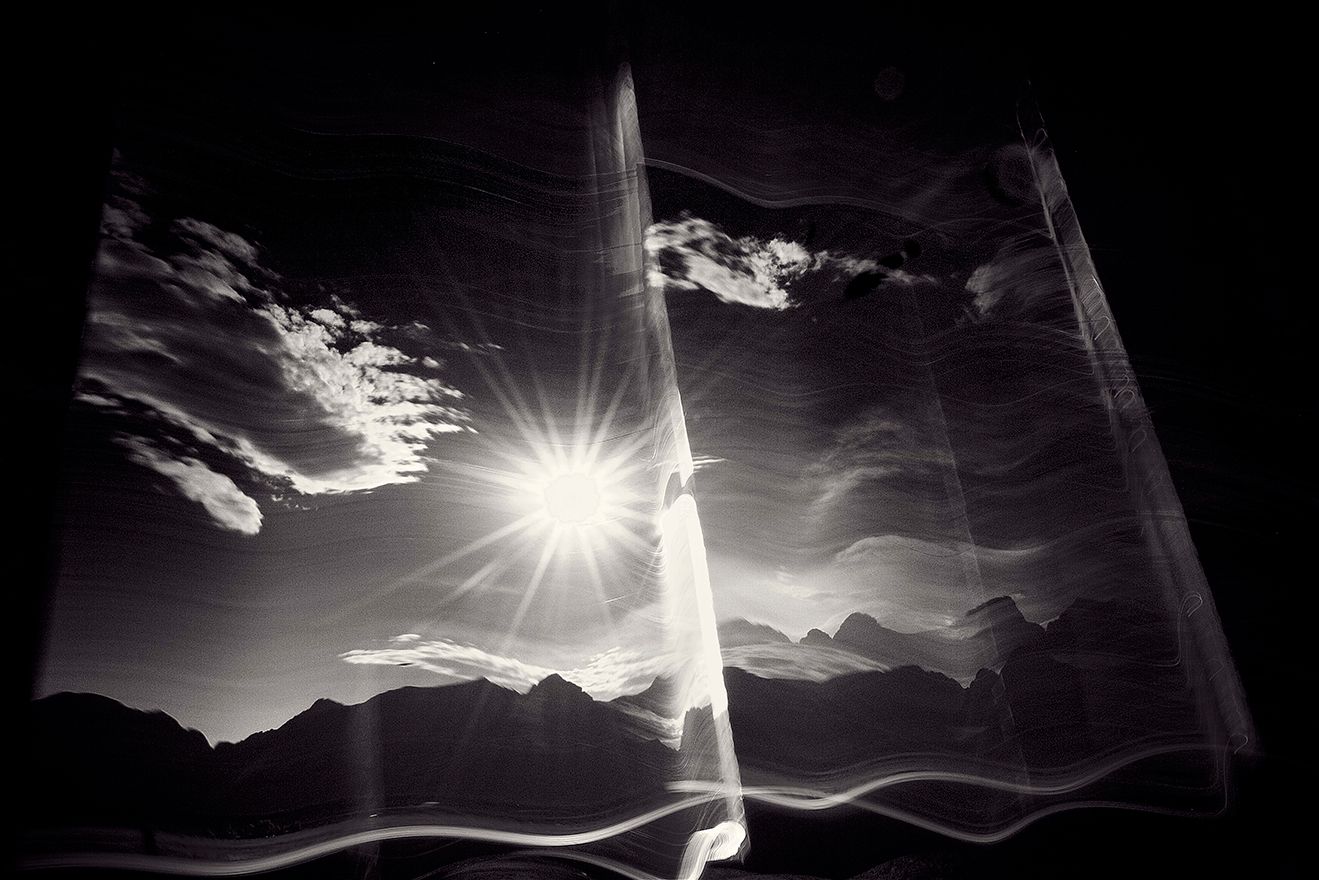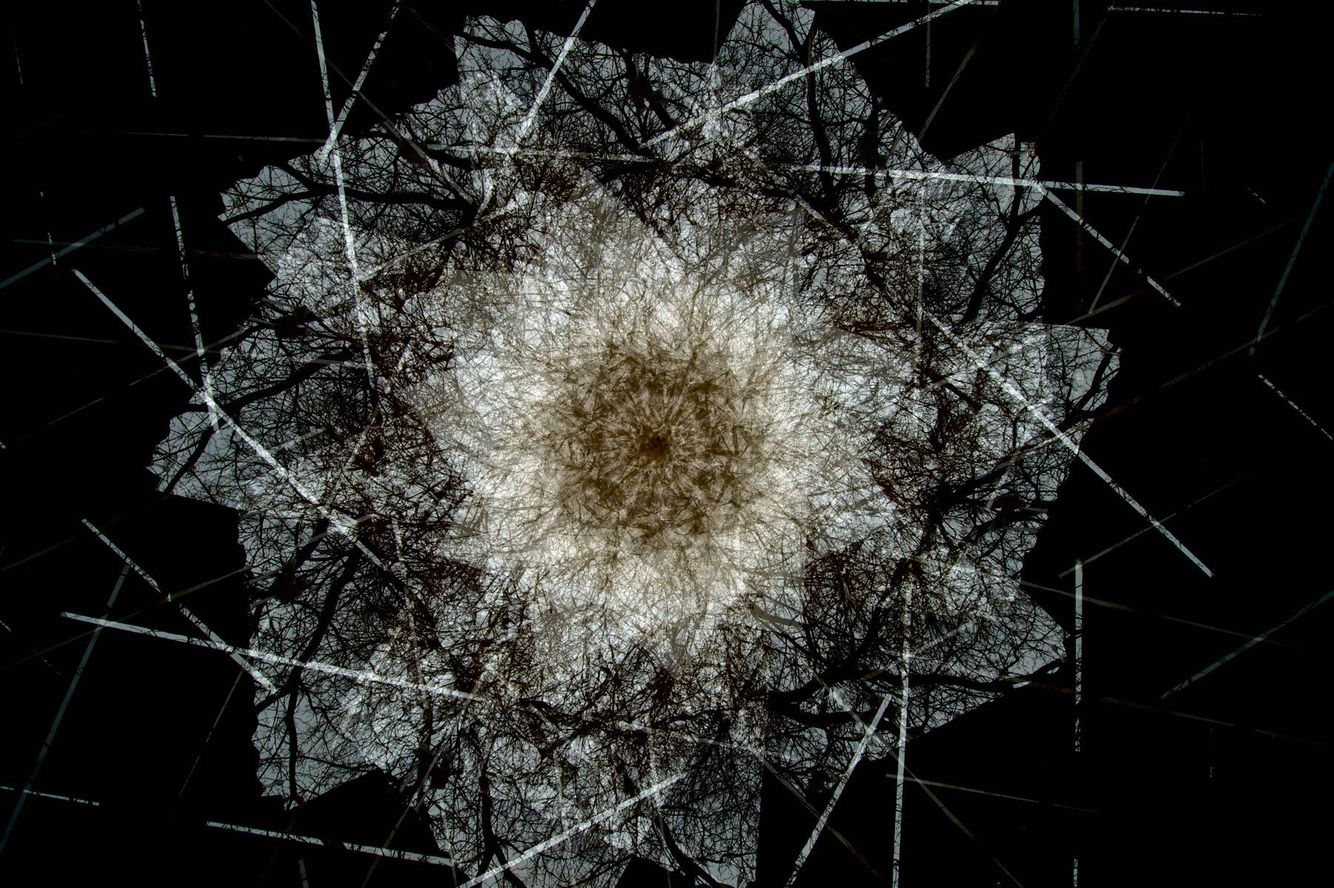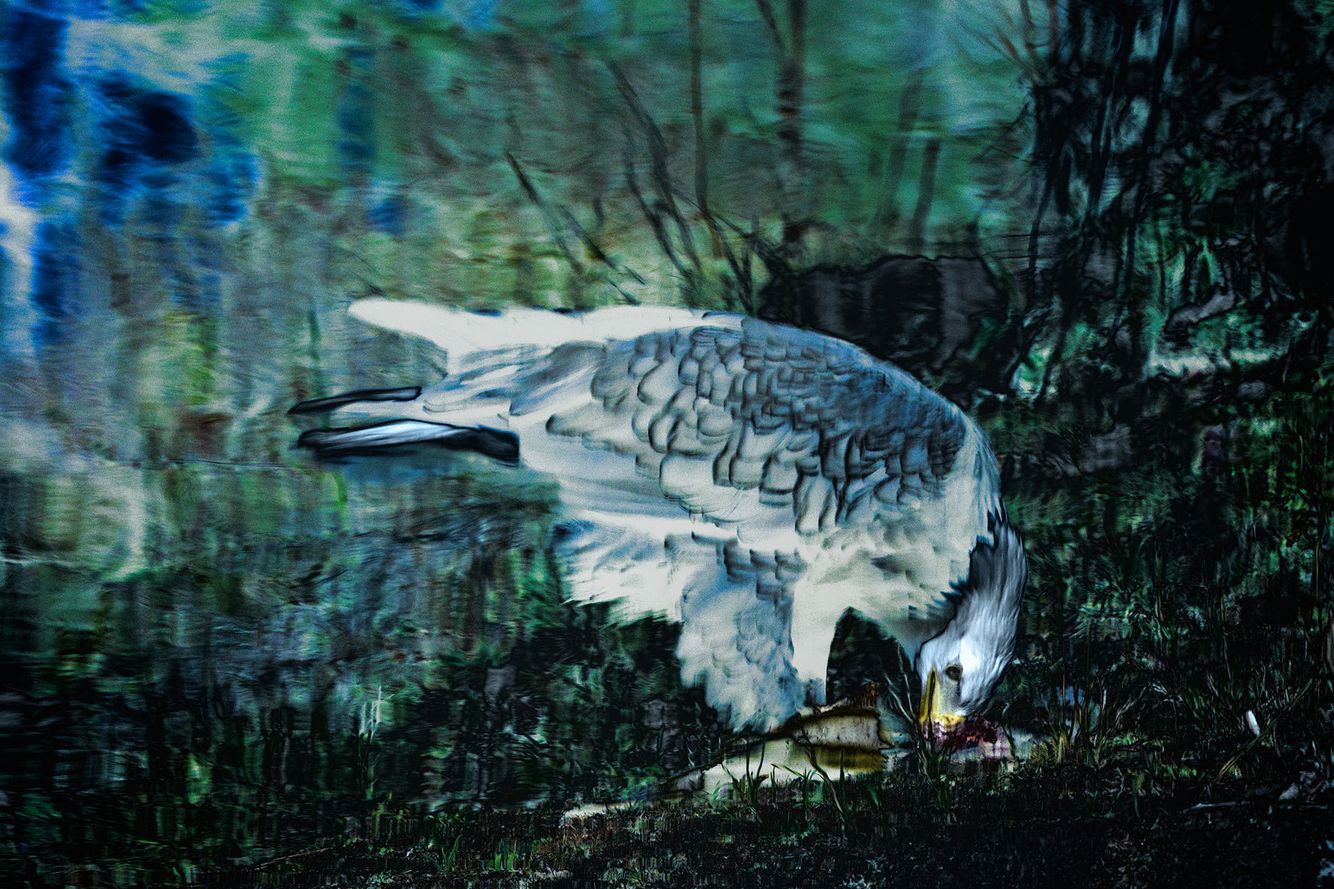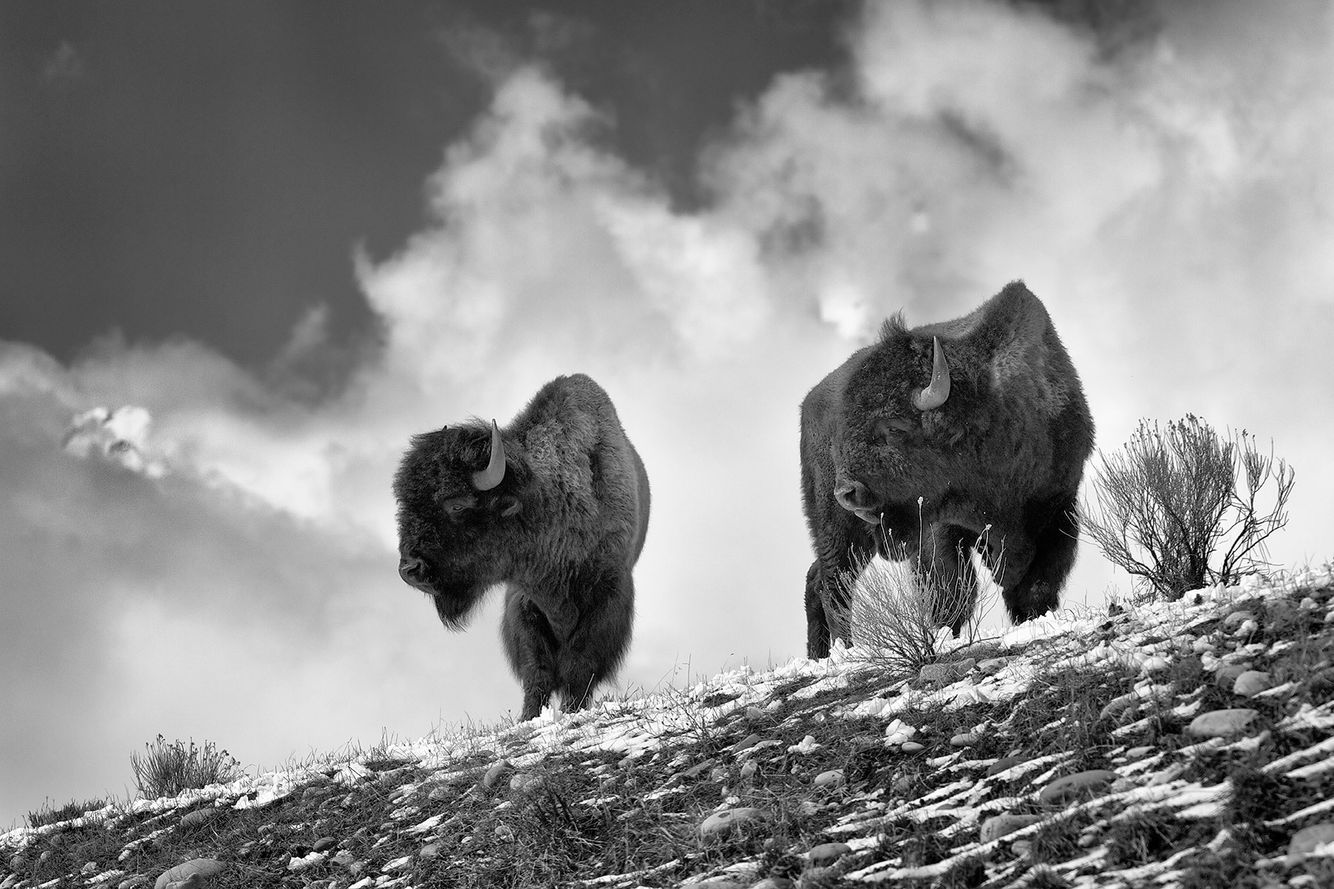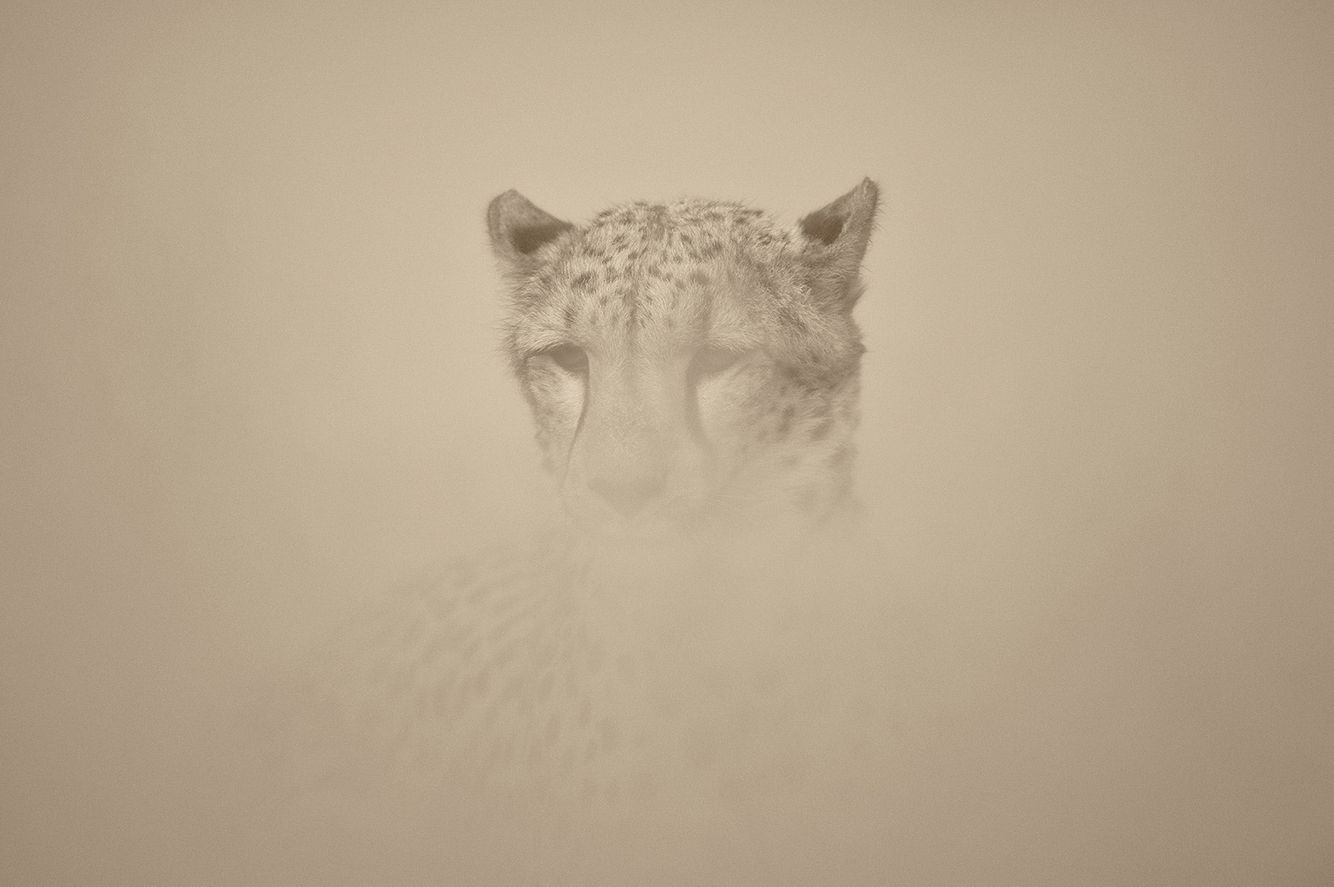Portfolios
Timeless Light
During my professional career, I was fascinated with the mind's agility in processing and interpreting sensory information. As an artist, I continue to explore the different ways in which the mind perceives the world around it and how the accepted norms can be challenged by creativity, curiosity and a camera. Much of my fine art photography has centred around creating what I refer to as Light Tapestries. Centuries-old architectural structures, with their dim interiors pierced by beams of exterior light, are transformed into a type of natural camera obscura, which becomes my studio. The interior walls form the canvas; the exterior landscape, the subject and palette; the hand held camera, the means; and a creative imagination, the vision. This emulsion of past and present, time and place, challenges the mind's interpretation of what it sees. Toned silver gelatin is the chosen printing medium as it is a process first introduced in approximately the same time period, the late 1800s, as the building of the heritage structures named in this series.
moreLandscapes and Abstracts
My Light Tapestry Landscape and Abstract images are created when a centuries- old architectural structure, with its dim interior, pierced by beams of exterior light, is transformed into a type of natural camera obscura. From within, I am essentially drawing with the streaming beams of light, by carefully choreographing the movement of my hand held camera, to create different 'versions' of the outside scene. In this manner, I can create representational landscapes as well as abstract images. The pigment ink on paper is the chosen printing medium as colour is important in this series. The images are created 'in camera', at the time of exposure. There is no Photoshop manipulation.
moreFleurons
My Light Tapestry Fleuron designs are created in similar environments, using a different technique. The process starts with repeated observations of the fleeting, light patterns that occur at different times of the day and their interaction with various objects existing naturally, both inside and outside. I then weave the various pieces together to create the pattern, in my mind's eye.
moreOnce Upon an Eagle
During annual canoe trips down the Snake River in Jackson, Wyoming, it was not uncommon to spot bald eagles peering down from the tree tops or soaring overhead. On this fall day, however, a mature bald eagle and a juvenile were feasting on a large trout at the water's edge. Quite oblivious to our presence... it was a photographer's dream.
Once Upon An Eagle represents a convergence of the photographic work which led to my previously exhibited Wildlife and Light Tapestry portfolios. My wildlfe photography has focused on honouring the subject matter in its natural environment and conveying the excitement that I feel in the moment that the shutter is released. My Light Tapestry portfolio followed long periods of playful experimentation with shafts of light, which subsequently led to a greater understanding of colour, luminence and light patterns. This focus and knowledge, when applied to my photography in Once Upon an Eagle, proved to be a creative way to exemplify and honour such a majestic, spiritual bird as well as evoke the same intense excitement that I experienced while photographing these eagles on the shore of the Snake River.
moreSurvival: Gift of the Great Spirit
I have had the privilege of observing and photographing wildlife in the Greater Yellowstone Ecosystem over the past 8 years. This unique area is the largest, mostly intact, temperate ecosystem in the northern hemisphere and home to the greatest concentration of wildlife in North America, including herds of free-roaming bison.
Bison are the largest land animals in North America, standing approximately 6 feet tall at their shoulders, weighing up to 2000 pounds, and able to run 45 miles per hour. To encounter such a massive, prehistoric looking animal in the wild, is arresting and the use of a very large telephoto lens is a prerequisite for a close encounter. I was intrigued by the resilience and character of this iconic survivor and soon began photographing bison, in all seasons and all weather conditions. Continued observation of the Wyoming herds led me to study their place in history, the reason why this is one of only a few areas left in North American where bison roam free and the factors that influence their preservation today.
Once called the ‘special Gift of the Great Spirit’ by the aboriginal peoples of North America, bison have existed since prehistoric times. In the early 1800s, the herds of bison numbered as many as 60 million. By the end of that century, however, they were reduced to near extinction due to hunting, the arrival of settlers, interference with their habitat and other human and natural causes. While there are now approximately 500,000 bison in North America, due to the efforts of farmers, ranchers and conservationists, only 30,000 are wild. The Yellowstone herd, numbering approximately 4000, is the largest, oldest, genetically pure, free roaming bison herd in North America.
moreWildlife: Today for Tomorrow
I feel privileged and deeply connected to wildlife when I observe them in their natural habitat and am witness to the rhythm of their days.
Wildlife photography requires thoughtful preparation; knowledge of individual species, their habits and their habitat; often varying degrees of hiking, climbing and travel; endless patience; and a love of the outdoors in all kinds of weather. Despite such endurance and dedication, there may be only 1 out of every 1000 pictures that captures the spirit of the animal, its essence. My hope is that the images in my Wildlife: Today for Tomorrow portfolio will evoke a sense of connection and respect for wildlife and our shared environment as well as an awareness of the immediate need for conservancy for species that are endangered or at risk of becoming endangered.
My goal as a wildlife photographer is to use my photography in ways which support wildlife conservancy so that the viewing experience of generations to come will not be limited to photographs. A portion of the proceeds from the CONTACT Toronto 2014 exhibition will be donated to the Big Life Foundation, which seeks to protect and sustain East Africa’s wild lands and wildlife. It is the only organization in East Africa that has coordinated anti-poaching teams operating on both sides of the Kenya-Tanzania border. At the current rate of poaching, there will not be any elephants or lions left in Africa in 15 years.
more